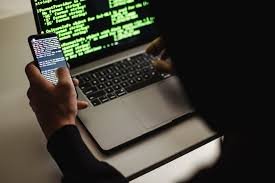In today’s hyper-connected world, the constant bombardment of notifications, emails, and social media updates can feel overwhelming. As technology continues to integrate into every aspect of our lives, more people are recognizing the need to step back and unplug. This has given rise to the digital detox trend, where individuals intentionally reduce their screen time and disconnect from digital devices to improve their mental and physical well-being. In this article, we’ll explore what a digital detox entails, the benefits it offers, and how to incorporate it into your life.
What Is a Digital Detox?
A digital detox involves taking a break from digital devices, including smartphones, computers, tablets, and social media platforms, to reduce stress and reconnect with the physical world. It’s not about completely abandoning technology but rather creating a healthier relationship with it. The duration of a digital detox can vary, ranging from a few hours each day to a complete weekend or even longer.
The concept of a digital detox is rooted in the understanding that constant connectivity can lead to burnout, decreased productivity, and strained relationships. By setting aside dedicated time to unplug, individuals can reset their minds, reduce anxiety, and engage more fully in their surroundings. Digital detoxes are often paired with activities like mindfulness, nature walks, and face-to-face interactions to maximize their benefits.
The Benefits of a Digital Detox
The advantages of a digital detox extend beyond just reducing screen time. It can have profound effects on mental, physical, and emotional health, making it an essential practice in an increasingly connected world.
- Improved Mental Health
One of the most significant benefits of a digital detox is its positive impact on mental health. Studies have shown that excessive screen time, particularly on social media, can lead to feelings of anxiety, depression, and loneliness. The constant comparison to others, fear of missing out (FOMO), and cyberbullying are common stressors associated with digital use.
A digital detox allows individuals to step away from these negative influences and focus on the present moment. This break can reduce anxiety, improve mood, and increase feelings of self-worth. Additionally, it provides an opportunity to engage in activities that promote mental well-being, such as reading, exercising, or spending time with loved ones.
- Enhanced Productivity and Focus
Constant notifications and the temptation to check emails or social media can significantly impact productivity. Research suggests that it takes an average of 23 minutes to refocus after a distraction, meaning that frequent interruptions can drastically reduce efficiency.
By committing to a digital detox, individuals can reclaim their time and focus on tasks without distractions. This can lead to increased productivity, better time management, and a greater sense of accomplishment. Whether it’s dedicating a few hours each day to deep work or spending a weekend unplugged, the benefits of enhanced focus and productivity are clear.
- Stronger Relationships and Social Connections
While digital devices are designed to keep us connected, they can sometimes have the opposite effect, leading to weakened relationships and a sense of isolation. The prevalence of “phubbing” (snubbing someone in favor of a phone) is a prime example of how technology can interfere with face-to-face interactions.
A digital detox encourages people to be more present in their interactions with others. Without the constant pull of notifications, individuals can engage more deeply in conversations, listen actively, and build stronger connections. Whether it’s spending quality time with family or catching up with friends, the absence of digital distractions allows for more meaningful and fulfilling social interactions.
How to Incorporate a Digital Detox Into Your Life
Incorporating a digital detox into your routine doesn’t have to be daunting. Here are some practical steps to help you get started:
- Set Clear Boundaries
Start by establishing specific times when you will unplug from digital devices. This could be during meals, an hour before bed, or while spending time with family. Setting clear boundaries will help you resist the urge to check your phone or respond to emails, allowing you to be more present in the moment.
- Create Tech-Free Zones
Designate certain areas of your home as tech-free zones. For example, keep digital devices out of the bedroom to promote better sleep or create a tech-free space in the living room where you can relax and unwind without distractions.
- Engage in Offline Activities
Replace screen time with activities that don’t involve technology. This could include reading a book, going for a walk, practicing mindfulness, or engaging in a hobby. These activities not only provide a break from screens but also contribute to your overall well-being.
- Plan a Digital Detox Day
Consider dedicating an entire day each week to a digital detox. Use this time to disconnect from all digital devices and focus on self-care, outdoor activities, or spending quality time with loved ones. A full day without screens can be incredibly refreshing and rejuvenating.
- Reflect on Your Digital Habits
Take time to reflect on your digital habits and assess how they impact your life. Are you spending too much time on social media? Do you feel anxious when you’re not connected? Understanding your relationship with technology can help you make more conscious choices about when and how you use digital devices.
Conclusion
In a world where technology is omnipresent, finding balance through a digital detox is more important than ever. By intentionally stepping away from screens, individuals can improve their mental health, enhance productivity, and strengthen relationships. As the digital detox trend continues to gain momentum in 2024, more people are discovering the benefits of disconnecting and reconnecting with what truly matters. Whether it’s a few hours each day or an entire weekend, incorporating a digital detox into your routine can lead to a healthier, more balanced life in an increasingly connected world.
